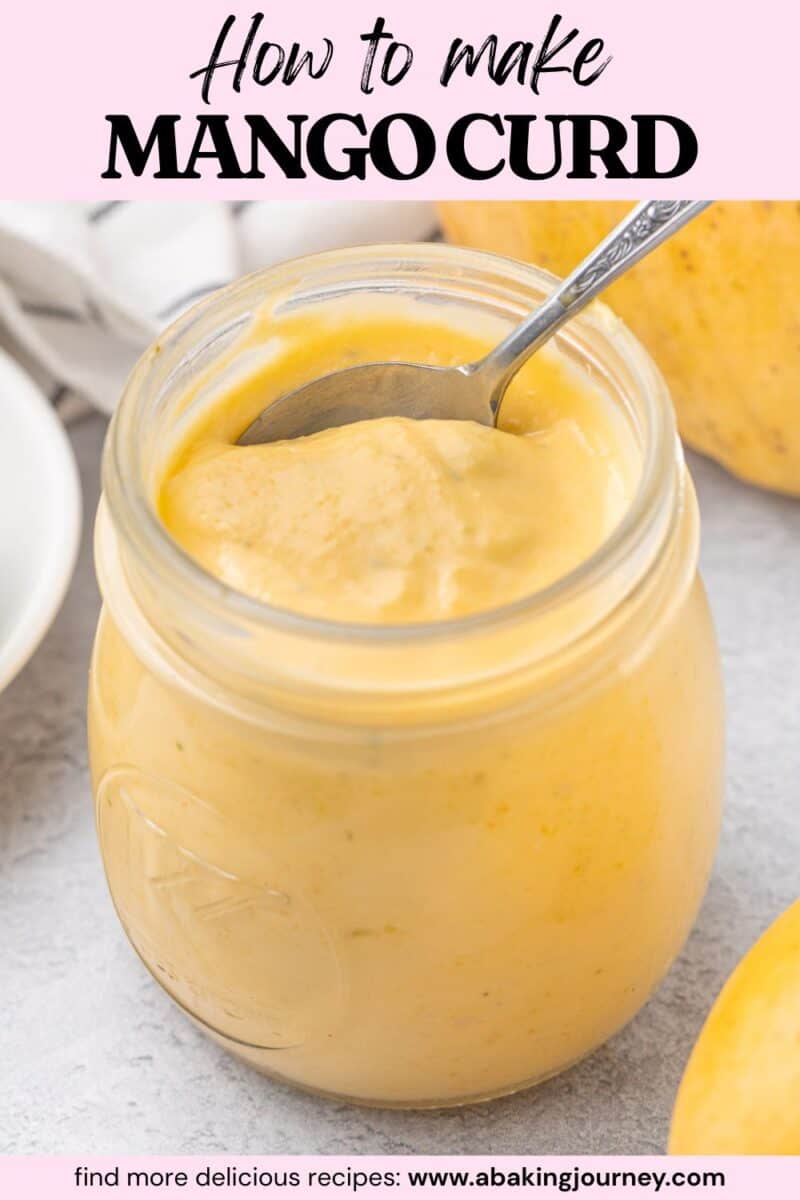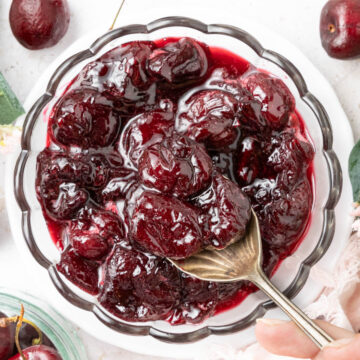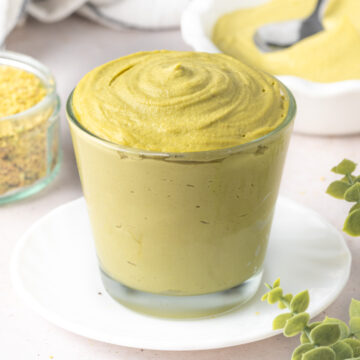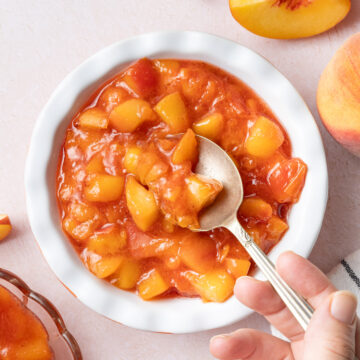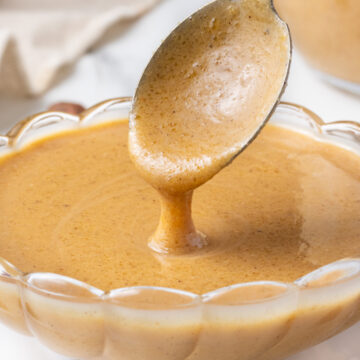This easy Mango Curd is deliciously light, fresh and creamy. The sweet mango flavours are perfectly balanced by the touch of lime, making this curd the perfect sweet spread, breakfast topping or pastries and cake filling.
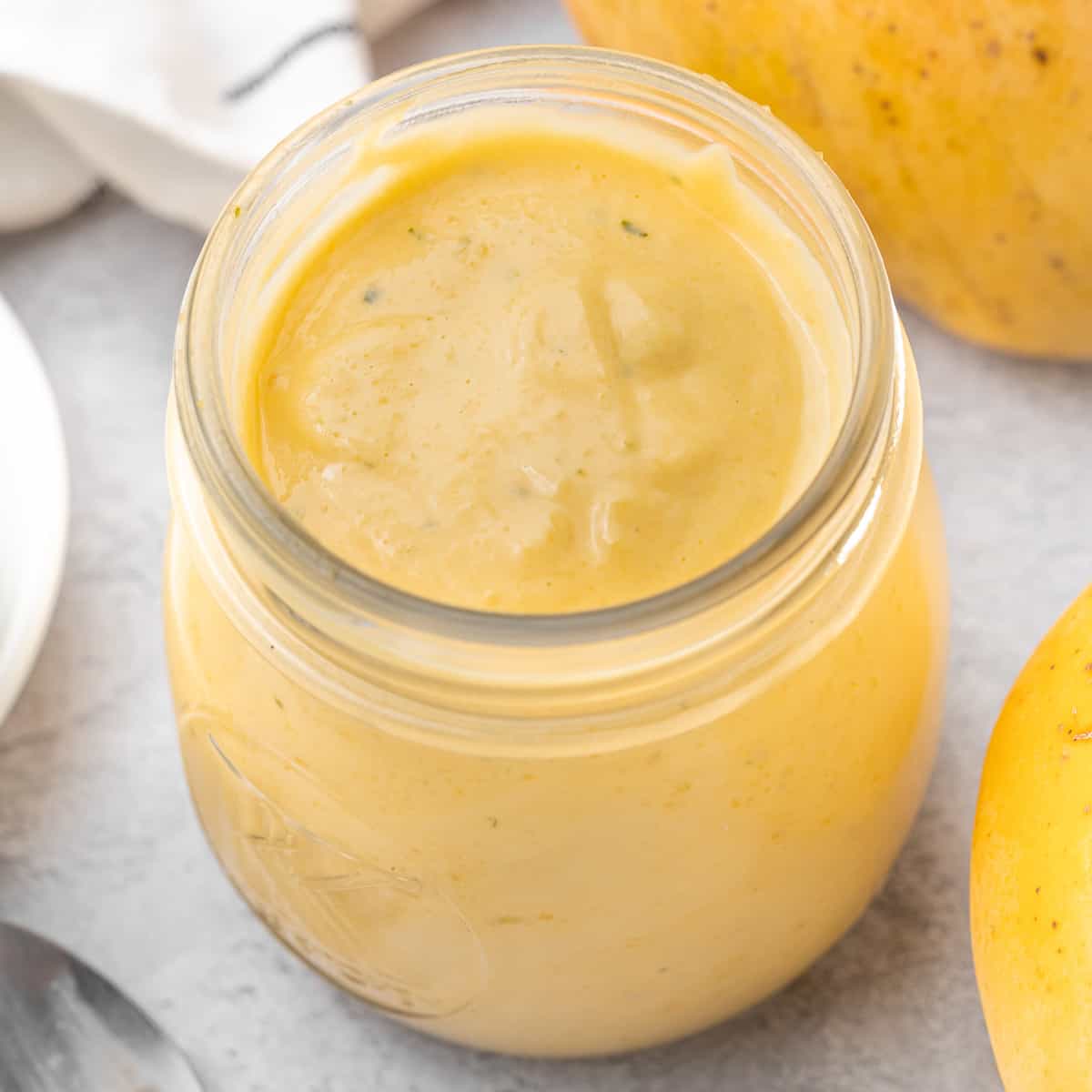
Jump to:
Why we love this recipe
This 5 ingredients mango curd recipe is a delicious way to use up ripe mangoes and transform them into a creamy, bright fruit spread.
It is perfect for spreading on toast, scones, waffles or pancakes, drizzling over ice cream and yogurt or to use as a filling / topping for tarts, macarons and cakes like this Mango Mousse Cake.
Using mango is a simple yet indulgent way to give a tropical twist to a classic lemon curd. Just like for in my Mango Coulis recipe, the fresh mango flavour is sweet and bright, and perfectly balanced by the tangy notes of the lime juice and zest.
More fruit curds recipes:
Ingredients
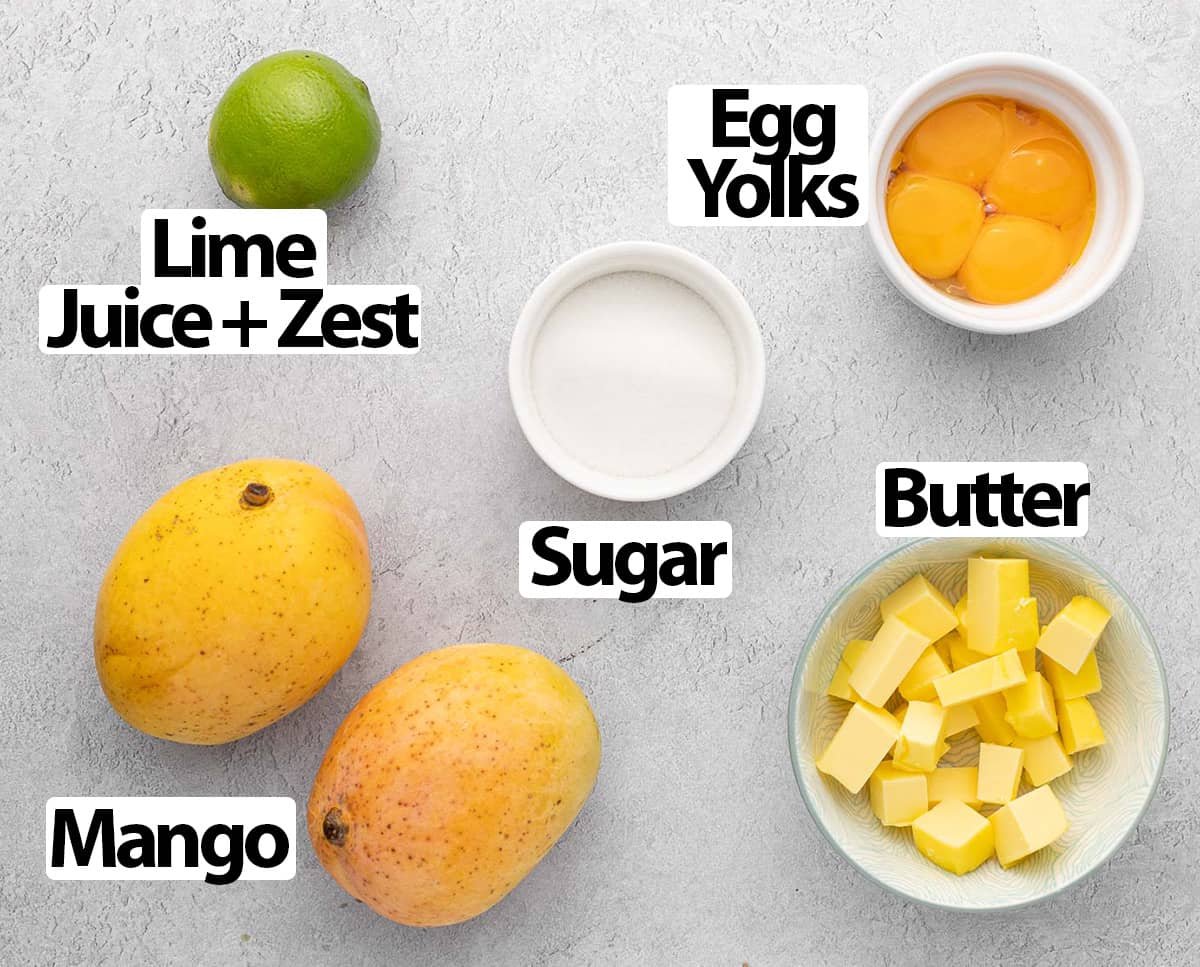
Scroll down to recipe card below for all quantities
What is mango curd made of:
- Mango : fresh mango flesh blended into a thin puree. You can also use frozen mango that has been thawed or some pre-made mango puree (as long as it is 100% mango). Use fresh ripe mango for the best flavours.
- Eggs: large egg yolks, at room temperature. Make sure the eggs are not cold or they risk curdling when you start cooking them. Keep the egg whites to make Financiers for example.
- Lime: both the lime zest and lime juice. You could substitute it with lemon juice and zest but I personally prefer the slightly milder taste of lime with mango.
- Sugar: caster sugar or superfine granulated sugar.
- Butter: unsalted butter, at room temperature (but not too soft) and sliced into cubes.
Optional addition
- Cornstarch: depending on how you are planning to use this curd, you might want to use a little bit of cornstarch to make it thicker and more stable.
- Salt and / or Vanilla: both used as flavour enhancers.
How to make Mango Curd
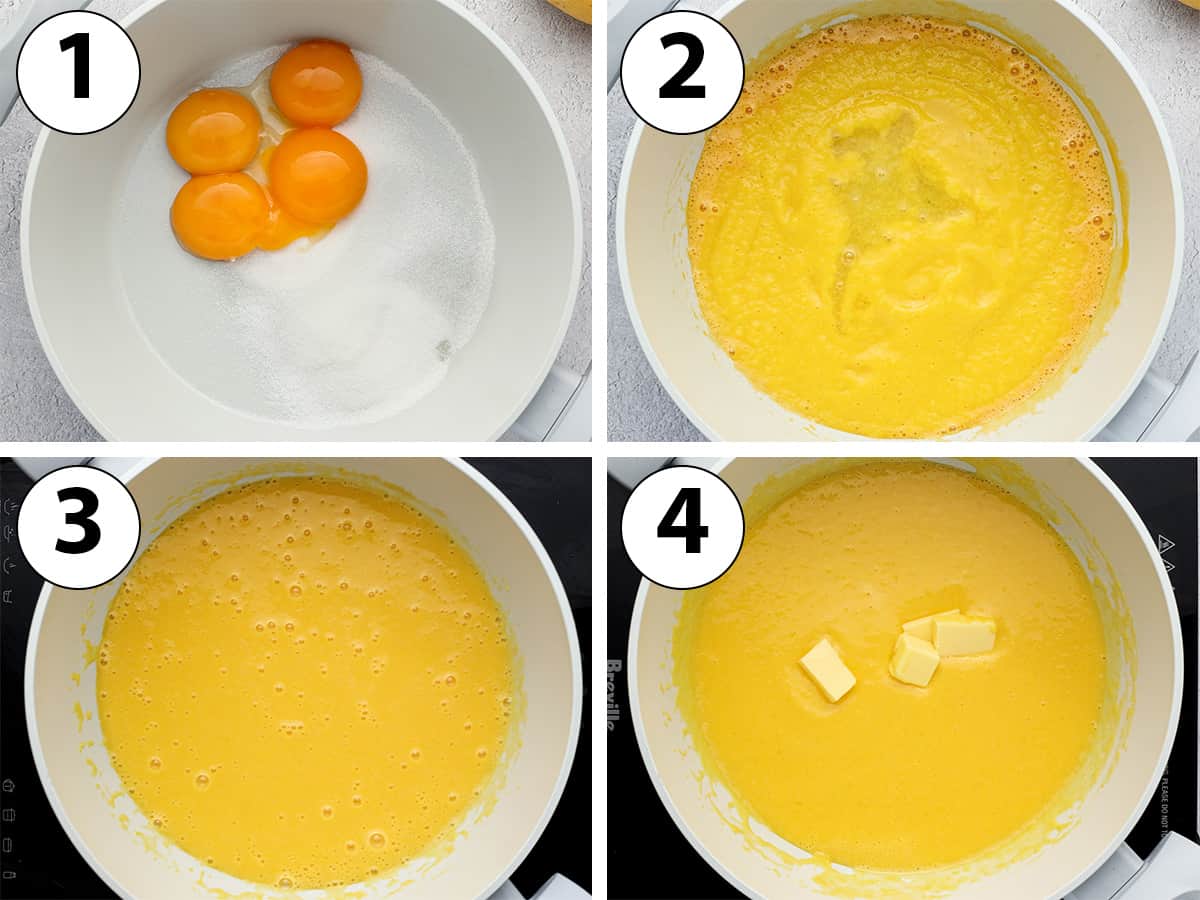
- Cut the mango, remove the skin and pip. Slice the mango flesh into small cubes and place in a blender or food processor. Blend until you get a thin puree. If using frozen mango, thaw and drain it first.
I personally like to keep some texture inside my curd so I used a rather thick mango puree. If you want a very smooth mango curd, you can blend the flesh for longer and / or pour it through a thin mesh sieve before using it.
- Photo 1: Place the egg yolks and sugar in a non-reactive, heavy based saucepan. Whisk to combine.
Avoid metal or aluminium saucepan that can react to the lime juice and give your curd a metallic taste. The cooking time can vary based on the size of your saucepan but as a reference, I used a medium saucepan.
- Photo 2: Add the mango puree and lime juice and whisk well.
- Photo 3: Place on the stove and turn on low heat. Stir with a heat-proof rubber spatula or wooden spoon for 3 to 4 minutes to allow for all the sugar to dissolve. The mixture should start to thicken very slightly.
Make sure not to go over medium heat or the eggs will cook too quickly and start to scramble, resulting in a curdle or lumpy curd. The curd should only simmer and never boil.
- Photo 4: Add the cubed butter a little bit at a time, stirring until completely melted in the mixture before adding more.
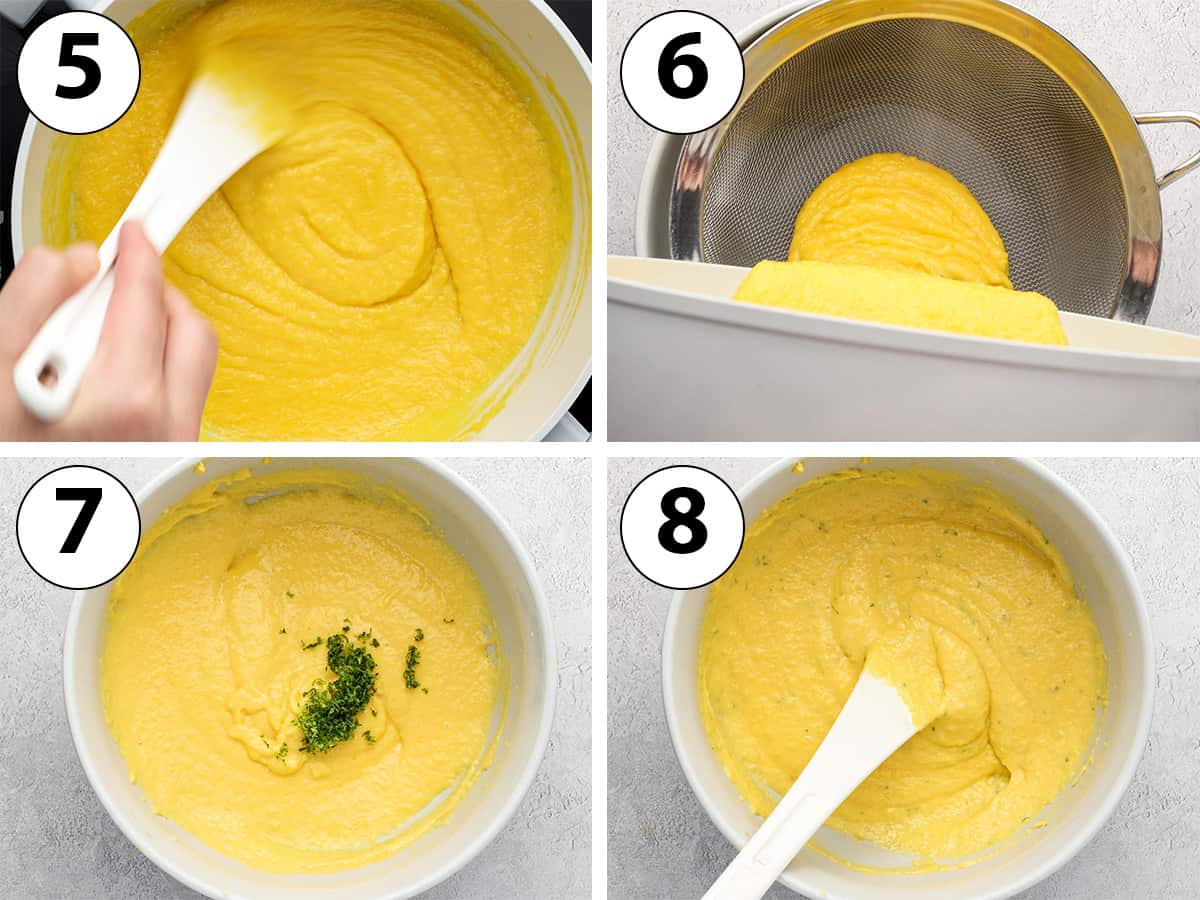
- Photo 5: Once all the butter has been incorporated, continue to cook for another 5 to 8 minutes (more or less depending on the heat and size of saucepan). The curd should have thickened and coat the back of a spoon or spatula.
Ideally, use a kitchen thermometer to check if the curd is cooked: it should reach about 82 degrees Celsius (180 degrees Fahrenheit) to be ready.
- Photo 6: Place a fine-mesh sieve over a large bowl and pour the cooked mango curd in it. Using a spatula, stir and press the curd through the sieve. Make sure to scrape the bottom of the sieve to save most of the curd. Discard any lumps or bits of cooked eggs.
- Photo 7 & 8: Add the lime zest and stir until just combined.
- Transfer the curd inside glass jars or airtight container, covering the top of the curd with plastic wrap touching its surface.
- Place in the fridge to chill for at least 2 hours, preferably overnight. The curd will set as it chills. Keep in the fridge.
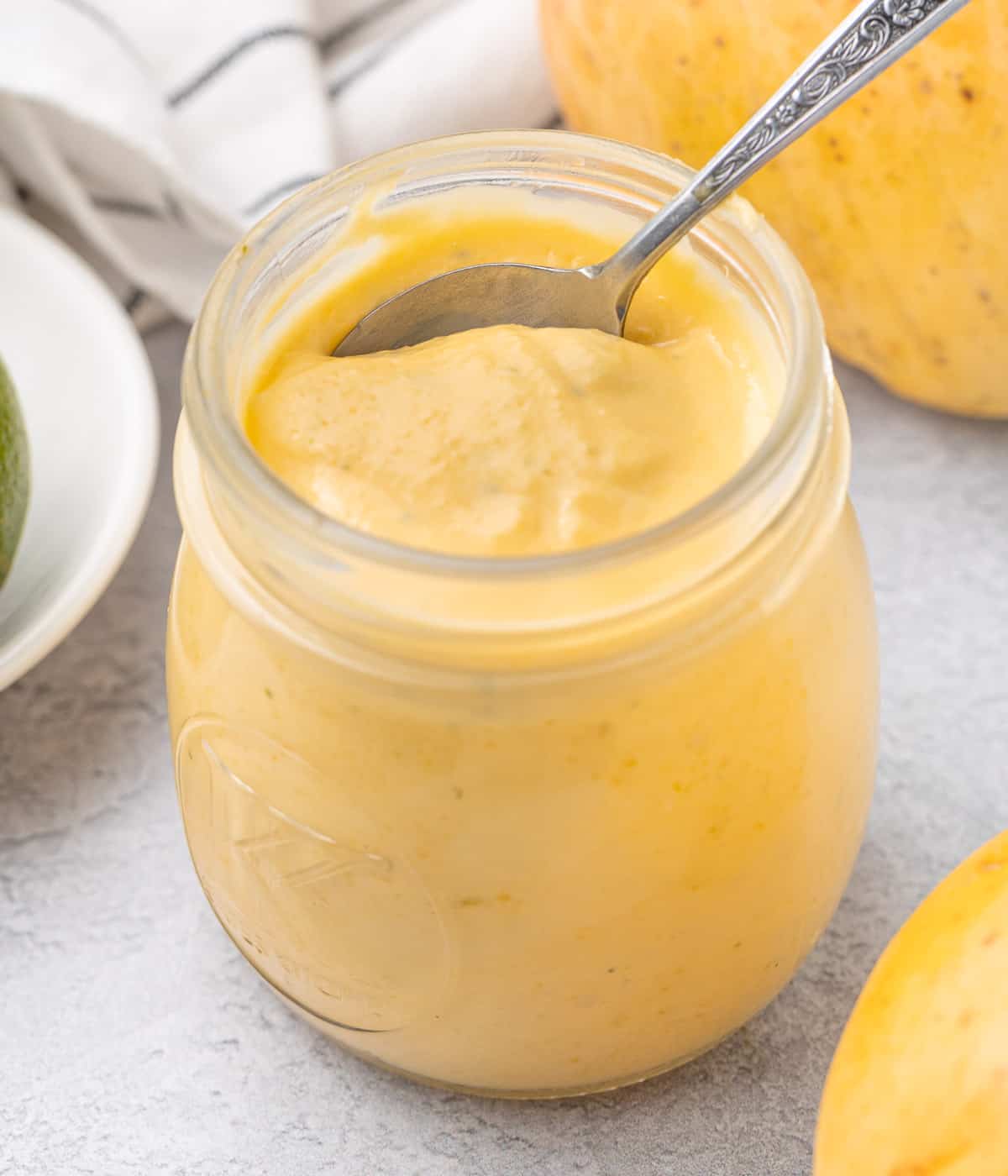
Recipe FAQs
You can absolutely use frozen mango chunks - just make sure to fully thaw them and discard any water or liquid that will come out. Canned mango will technically work too, but they tend to be stored in sweet syrup which will change the overall taste of the curd.
- Feel the mango under your fingers: it should feel quite soft. If it feels hard, it is not ripe.
- Ripe mango should smell quite fragrant.
- Depending on the mango variety, a ripe mango will usually turn deep yellow or orange.
There are two methods to check if a curd is properly cooked:
- Check the temperature with a kitchen thermometer; it needs to reach 82 degrees Celsius (180 degrees Fahrenheit).
- Dip the back of a spoon or spatula in the curd, draw a line with a finger (be careful, it will be hot) and tip it down. If the curd looks liquid and runs over the clear line, it's not ready. If the curd looks thick and the line stays clear, it's ready.
Because it contains both sugar and acidity thanks to the lime juice, this mango curd can be canned and preserved.
I personally don't have any experience with canning so I recommend referring to a recipe that will give you specific instructions if you wanted to can the curd.
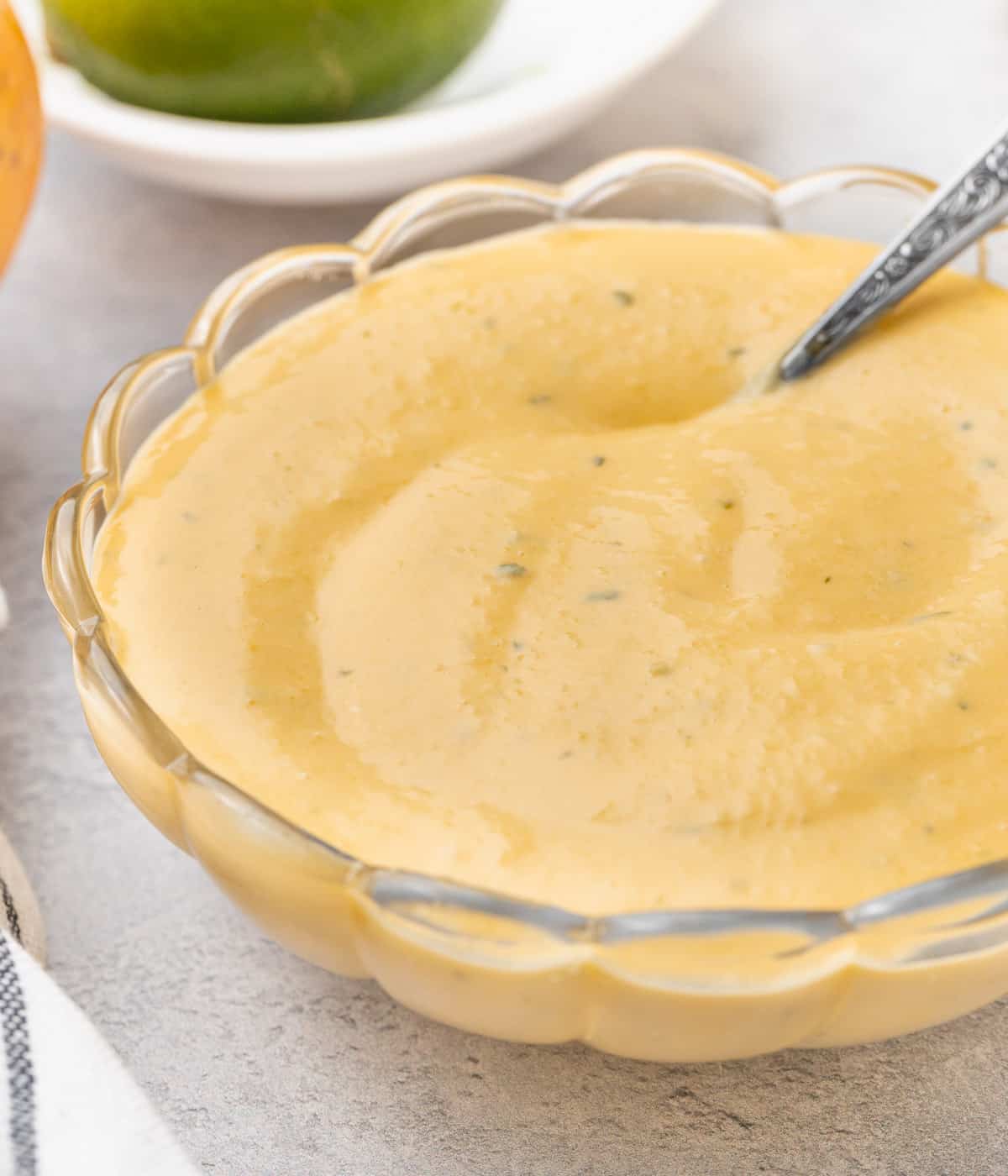
Tips & Troubleshooting
- Direct Heat vs Double Boiler Method: with the "direct heat" method, you cook the curd directly inside the saucepan on a very low heat. It is the quickest method, but you risk overcooking the curd and the eggs. The "indirect heat" method requires you to cook the curd in a heat-proof bowl over a double-boiler. It takes much longer to thicken, but you avoid the risk of burning the curd.
- The mango curd is lumpy or eggy: this may happen if the heat is too high and the curd starts to boil. The curd should only ever go as high as a simmer. You can pour the curd through a fine mesh sieve or strainer to remove the cooked eggs. If needed, use an immersion blender to smooth it out.
- Why is my curd too liquid or not thickening? It is probably not cooked enough yet. Making curd can be a long process because we are working with a very low heat - but keep stirring until it thickens! Also note that the curd will continue to thicken while it sets in the fridge.
- How thick should the curd be? It needs to be thick enough to coat the back of a spoon. You can create different textures by blending the mango flesh more or less. I like mine to be quite thick so i blend the mango until just liquid. For a thinner consistency, keep blending the flesh until very thin and pour through a sieve before using.
How to use Mango Curd
- Spread over pancakes, waffles, french toast, crepes, biscuits, scones, yogurt, ice cream,...
- As a cake filling or topping like this Mango Mousse Cake.
- Used inside pastries, tart shells or as macaron filling.
- Topped over desserts like pavlova, cheesecake or mango panna cotta.
- On its own as a delicious dessert!
Storing & Freezing
Mango curd should be stored in the fridge, either in an airtight container or in a sealed jar. Although it will technically last for longer, I recommend eating it within a week for the best flavour and freshness.
Curds can be frozen, but I don't personally recommend it as it creates an odd texture when thawed.
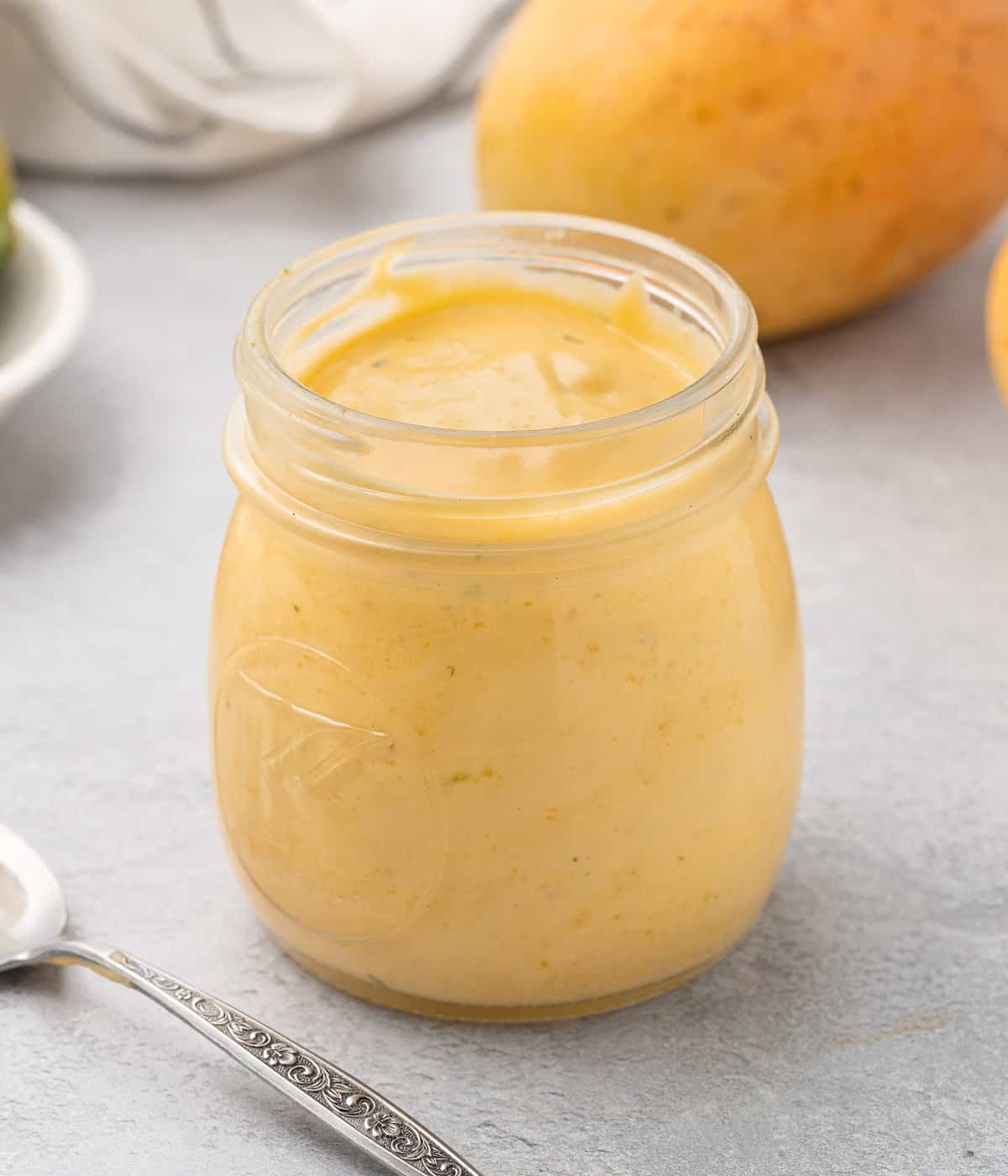
More Fruit Spreads
Made this recipe?
Let us know if you liked it by leaving a comment below, and tag us on Instagram @a.baking.journey with a photo of your creation!
Recipe
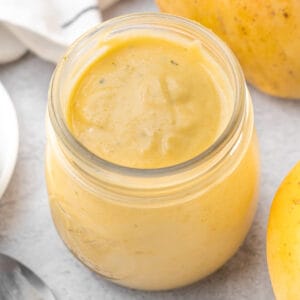
Mango Curd
Ingredients
- 200 gr Mango Flesh
- 4 large Egg Yolks - at room temperature
- 40 gr Caster Sugar
- 30 ml Lime Juice - about 1 lime
- 90 gr Unsalted Butter - at room temperature
- 1 teaspoon Lime Zest
Disclaimer
I highly recommend using the measurements in grams & ml (instead of cups & spoons) for more accuracy and better results.
Instructions
- Cut the mango, remove the skin and pip. Slice the mango flesh into small cubes and place in a blender or food processor. Blend until you get a thin puree (see note 1). If using frozen mango, thaw and drain it first.
- Place the egg yolks and sugar in a non-reactive, heavy based medium saucepan. Whisk to combine then add the mango puree (optionally sieved) and lime juice. Stir then place on the stove.
- Cook for 3 to 4 minutes on low heat, constantly stirring with a heat-proof spatula. The sugar should have dissolved and the mixture should start to thicken very slightly.
- Add the cubed butter a little bit at a time, stirring until completely melted in the mixture before adding more.
- Once all the butter has been incorporated, continue to cook for about 5 to 8 minutes (more or less depending on the heat and size of saucepan). The curd should have thickened, coat the back of a spoon or spatula and reach about 82 degrees Celsius / 180 degrees Fahrenheit (see note 2).
- Place a fine-mesh sieve over a large bowl and pour the cooked mango curd in. Press the curd through the sieve and discard any lumps or bits of cooked eggs (see note 3).
- Add the lime zest and stir until just combined.
- Transfer the curd inside glass jars or airtight container (see note 4) and refrigerate for at least 2 hours, preferably overnight. The curd will set as it chills. Keep in the fridge for up to a week.
Tried this recipe? Make sure to leave a comment and star rating below!
Notes
- I personally like to keep some texture inside my curd so I used a rather thick mango puree. If you want a very smooth mango curd, you can blend the flesh for longer and / or pour it through a thin mesh sieve before using it.
- Make sure not to go over medium heat or the eggs will cook too quickly and start to scramble, resulting in a curdle or lumpy curd. The curd should only go as high as a simmer - and never boil.
- If you find the curd to be still lumpy after sieving it, you can use an immersion blender to smooth it out. Be careful not to blend too much or the curd will turn too liquid and won't set properly.
- If stored in containers, I recommend covering the top of the curd with plastic wrap touching its surface so that it does not create a skin on top.

